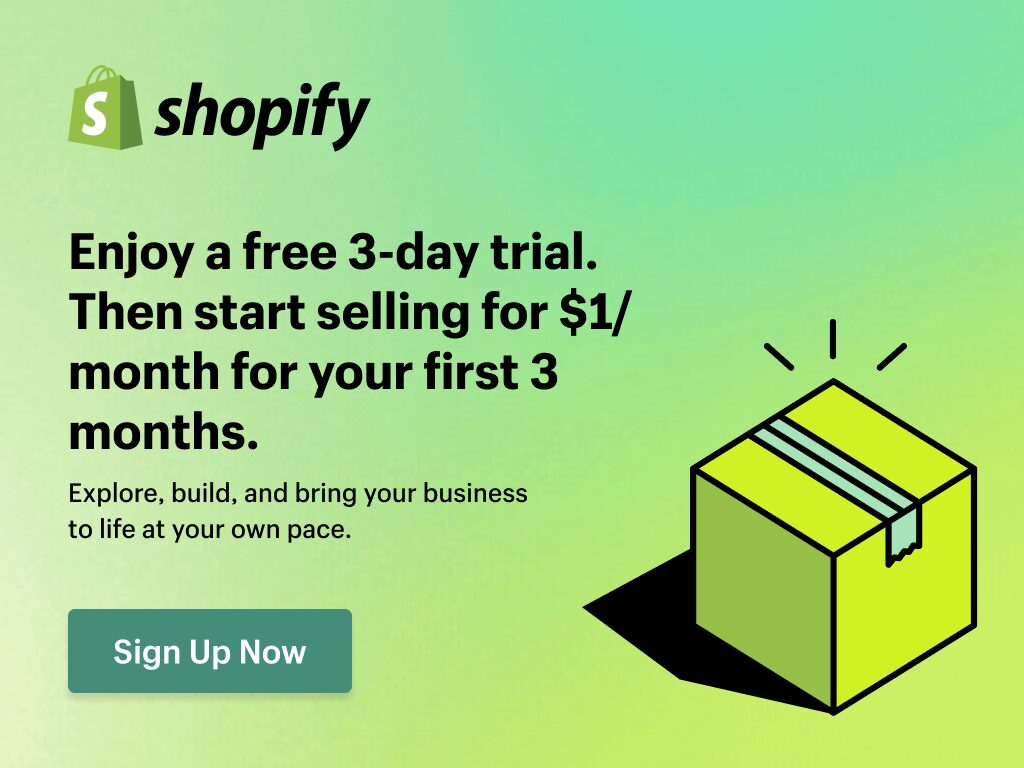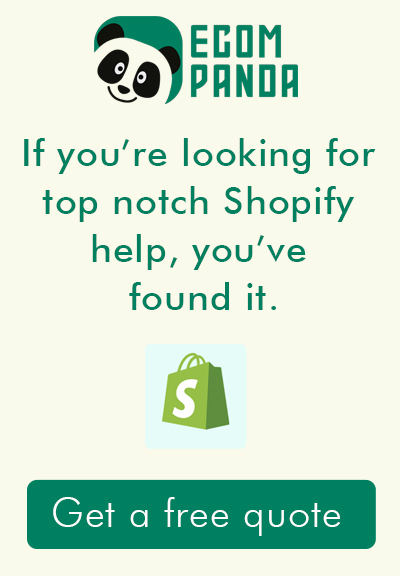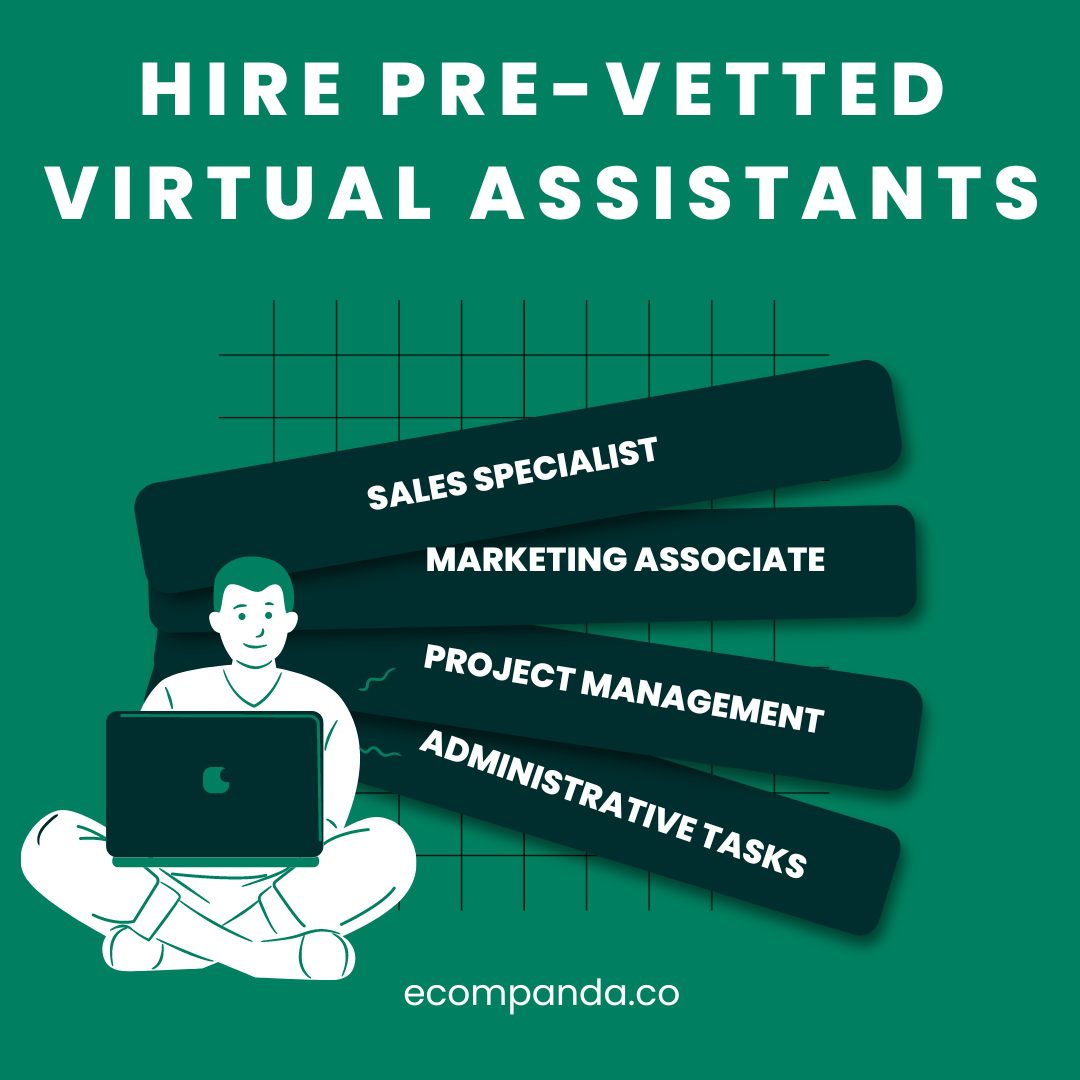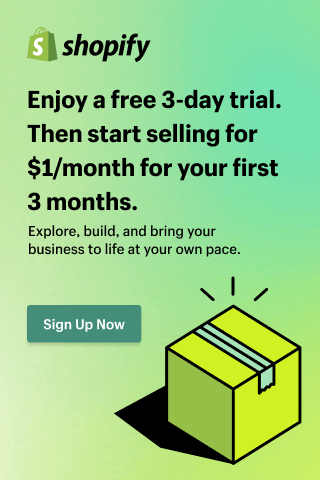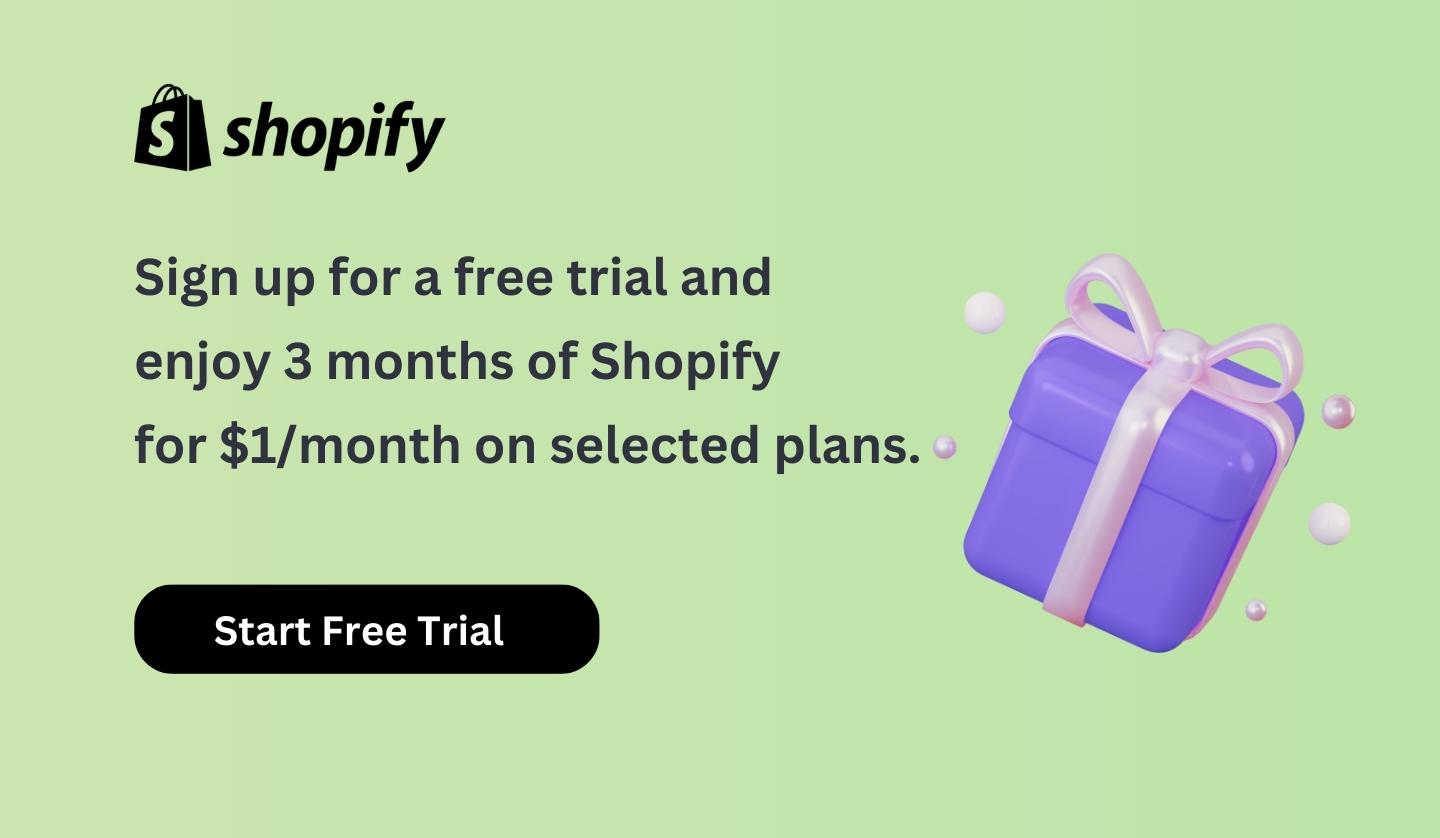Introduction
In today’s digital age, the online marketplace has become the new frontier for businesses, and at the heart of this revolution lies the eCommerce platform, Shopify. With over a million businesses leveraging its services, a well-crafted Shopify landing page has become a pivotal component of any successful online store.
A landing page serves as the first point of contact between your business and potential customers. It’s your storefront, the digital face of your business, designed to attract, intrigue, and ultimately convert visitors into customers. The quality and effectiveness of your landing page can greatly influence the success of your business, affecting everything from customer engagement to conversion rates, and overall sales.
That’s where our focus keyword, “5 Proven Strategies for Crafting the Perfect Shopify Landing Page,” comes into play. In an ocean of online shops, how can your landing page stand out, attract the right audience, and guide them to make a purchase? This article aims to answer that question by diving into five tested and proven strategies that will help you build an effective, conversion-focused landing page on Shopify. Whether you’re just starting your online business or looking to improve an existing one, these strategies will provide valuable guidance on your journey towards eCommerce success.

Table of Contents
Understanding Shopify Landing Pages
A Shopify landing page is a standalone web page created specifically for a marketing or advertising campaign. Unlike your general website pages that serve multiple purposes, a landing page has a single-focused objective or call to action (CTA). It’s where a visitor lands after clicking on a link in an email, social media post, or online ad, and it’s designed to guide them toward a specific action – usually, making a purchase or subscribing to a list.
The importance of a Shopify landing page in an eCommerce business cannot be overstated. It’s a critical tool for customer acquisition, allowing you to drive targeted traffic to a specific product or promotion, capture leads, and boost conversions. It gives you the opportunity to present your products in the best possible light, create a compelling narrative, and persuade visitors to take the desired action.
There are several common elements that successful landing pages typically share:
- Compelling Headline: The headline is the first thing your visitors see. It should be captivating, succinct, and clear about what you offer.
- Unique Value Proposition (UVP): Your UVP should highlight what makes your product or offer unique and why visitors should choose it over your competitors.
- High-Quality Images: Clear, high-quality images help to showcase your products in the best possible light and enhance the overall aesthetics of your page.
- Engaging Copy: Your landing page copy should be persuasive and concise, focusing on the benefits of your product and compelling visitors to act.
- Call to Action (CTA): The CTA is perhaps the most important element of your landing page. It should be clear, prominent, and persuasive, guiding visitors to take the desired action.
- Social Proof: Testimonials, reviews, and case studies can serve as powerful social proof, building trust and persuading visitors that your product is worth purchasing.
Understanding these elements and how to use them effectively is the first step towards creating a successful Shopify landing page.
Strategy #1: Creating a Clear and Compelling Value Proposition
A value proposition is a clear, concise statement that explains how your product or service solves customers’ problems, delivers specific benefits, and tells the ideal customer why they should buy from you over your competitors. It is arguably one of the most critical components of your landing page as it provides visitors with a quick understanding of what you offer and why it matters to them.
The importance of a clear and compelling value proposition lies in its potential to make or break your customer’s decision to engage further with your site or bounce back. It serves as the primary hook, grabbing your visitor’s attention, sparking interest in what you’re offering, and motivating them to continue exploring your landing page. When done right, a strong value proposition can differentiate your brand from competitors, highlight your unique selling points, and ultimately lead to higher conversion rates.
Consider the value proposition of skincare brand, ‘Dermstore,’ on their Shopify landing page. They simply state, “Professional-strength formulas from top skincare brands.” This tells visitors exactly what they can expect—high-strength, professional skincare products. The value proposition is further reinforced by the subheading, “Free shipping On US orders over $50”, making the offer even more attractive.
Another Shopify store, ‘Haus,’ uses the value proposition, “Craft aperitifs, delivered.” This concise statement tells visitors they offer craft aperitifs, a niche product, and that they deliver it right to your door. It’s a clear, attractive proposition for anyone interested in this specific product category.
These examples highlight how a well-crafted value proposition can effectively convey your unique selling points, attract the right customers, and set the stage for a high-converting landing page.
Strategy #2: Optimizing for a Mobile-First Experience
In recent years, mobile commerce, or m-commerce, has been rapidly gaining momentum. According to a report from Statista, by the end of 2021, 73% of e-commerce sales were expected to take place on a mobile device. This shift towards mobile shopping is primarily driven by the global increase in smartphone usage and the convenience offered by mobile devices for on-the-go shopping.
Given this trend, optimizing your Shopify landing page for a mobile-first experience is not just important, but absolutely essential. A mobile-optimized landing page ensures that your website’s design, images, and layouts adjust seamlessly to fit the screen on which it’s viewed, be it a smartphone, tablet, or desktop. This is key to providing a seamless user experience, which can significantly influence your visitors’ perception of your brand and their likelihood of converting.
Creating a mobile-first Shopify landing page involves several key considerations. Firstly, your page should load quickly on mobile devices as slow load times can lead to high bounce rates. Secondly, your design should be simple and clean, with easy-to-read text and clear, clickable call-to-action buttons. Lastly, it’s crucial to ensure that all forms and checkout processes are simplified for mobile input, and that your content is as concise as possible, keeping in mind the shorter attention spans of mobile users.
A great example of a mobile-optimized landing page is that of ‘Allbirds’, a sustainable footwear brand. Their Shopify landing page displays large, high-quality images that showcase their products effectively on both desktop and mobile devices. The navigation menu, product information, and call-to-action buttons all adapt seamlessly to a smaller mobile screen, ensuring a smooth user experience.
Similarly, ‘Brooklinen,’ a luxury bedding brand, also provides a stellar mobile-first experience. Their landing page loads quickly, offers simple navigation, and makes it easy for customers to view product details and make a purchase directly from their mobile devices.
By optimizing your landing page for a mobile-first experience, you can tap into the ever-growing m-commerce market and create a seamless shopping experience for all your visitors, regardless of the device they use.
Strategy #3: Incorporating High-Quality Visuals and Multimedia
Visuals and multimedia play a critical role in enhancing user experience, making your landing page more engaging and effective. They help present your products in a more detailed and attractive manner, stimulate viewers’ imaginations, and can ultimately influence their purchase decisions.
Various types of visuals and multimedia can be used on your Shopify landing page. These include:
- Product Images: High-resolution, multiple-angle shots of your product, possibly in use, are crucial to give your visitors a thorough understanding of what they’re buying.
- Videos: Product demonstrations or user testimonial videos can provide a richer, more interactive experience, building trust and demonstrating value in a way static images can’t.
- Infographics: These are a great way to explain complicated concepts or processes in a simple, visual manner.
- Animations or GIFs: These can be used to catch attention, demonstrate a product feature, or just make your landing page more engaging.
Best practices for using visuals and multimedia on Shopify landing pages include:
- Use high-quality images and videos: Low-quality visuals can damage your brand’s reputation and lower perceived product value.
- Optimize image and video size: To ensure quick load times, it’s important to optimize your media files. High-quality visuals are great, but not if they slow down your page.
- Showcase your product in use: This helps visitors visualize how the product can fit into their lives and what problems it can solve.
- Add alt text to your images: This is an SEO best practice that can also improve accessibility for visually impaired users.
A good example of a Shopify landing page incorporating high-quality visuals is ‘MVMT Watches.’ They use high-quality images of their watches and lifestyle photos showcasing their products in use, making the page more engaging and persuasive. Similarly, ‘Pura Vida Bracelets’ incorporate user-generated content on their landing page, offering authentic, visual proof of their product in action.
By incorporating high-quality visuals and multimedia, you can significantly enhance your Shopify landing page, making it more attractive, engaging, and effective in driving conversions.
Strategy #4: Using Trust Signals and Social Proof
Trust signals and social proof are powerful tools in establishing credibility and persuading potential customers to make a purchase. Trust signals are indicators that reassure visitors about the authenticity and reliability of your business, while social proof leverages the psychology principle that people are more likely to follow the actions of others, using testimonials, reviews, and endorsements to demonstrate that others trust your business and products.
The influence of trust signals and social proof on buyer behavior is significant. Consumers often rely on reviews and testimonials when deciding whether to trust a brand or make a purchase. According to a survey by BrightLocal, 88% of consumers trust online reviews as much as personal recommendations. Hence, showcasing positive customer experiences can significantly enhance your credibility and persuade potential customers that your product is worth buying.
There are several ways to integrate trust signals and social proof into your Shopify landing page:
- Customer Reviews and Testimonials: Displaying customer reviews and testimonials on your landing page can provide authentic feedback about your products and build trust with your visitors.
- User-Generated Content: Featuring images or videos of customers using your product can serve as powerful social proof, showing that real people are enjoying your product.
- Trust Badges: These could include security badges, money-back guarantees, or badges indicating secure payment options, all of which can reassure visitors about the safety and reliability of your store.
- Media Mentions or Endorsements: If your product has been featured or endorsed by any influencers, industry experts, or media outlets, showcasing these on your landing page can enhance your credibility and appeal.
A great example of a Shopify landing page that effectively uses social proof is ‘Gymshark,’ a fitness apparel brand. They showcase customer reviews and ratings prominently on their product pages, building trust and influencing potential buyers. ‘SkinnyMe Tea’ is another Shopify store that leverages user-generated content by featuring ‘before and after’ images from customers, providing powerful visual proof of the effectiveness of their product.
By incorporating trust signals and social proof, you can significantly enhance the credibility of your Shopify landing page, building trust with visitors and persuading them to make a purchase.
Strategy #5: Implementing Strong Calls-to-Action (CTAs)
A Call-to-Action (CTA) is a prompt on a website that encourages a user to take some specified action. This could be anything from subscribing to a newsletter, downloading a free ebook, or most commonly in eCommerce, making a purchase. CTAs are typically presented as a button or hyperlink, using compelling action words to motivate the user.
CTAs play a critical role in converting visitors into buyers on your Shopify landing page. They guide your visitors through the buying journey, providing clear instructions on what steps to take next. Without a strong CTA, your visitors may be left unsure about what to do next, leading to lower conversion rates.
When crafting compelling CTAs for your Shopify landing page, consider the following tips:
- Use Action-Oriented Language: Your CTA should inspire action. Use verbs like “Buy,” “Shop,” “Order,” “Subscribe,” or “Download” to clearly tell visitors what to do next.
- Make It Stand Out: Your CTA should be one of the most noticeable elements on your page. Use contrasting colors, large text, and a button design to make it stand out.
- Create Urgency: If appropriate, creating a sense of urgency can encourage visitors to take action immediately. Phrases like “Limited Time Offer,” “Order Now,” or “Only a Few Left” can add an element of urgency to your CTA.
- Communicate Value: Your CTA should make it clear what value the visitor will receive by clicking. For example, instead of just “Subscribe,” you could say “Subscribe to Get Exclusive Deals.”
A great example of a Shopify landing page with a strong CTA is ‘Allbirds.’ Their primary CTA button says “Shop Now,” and it’s displayed prominently on their homepage, clearly guiding visitors to start shopping.
By implementing strong CTAs on your Shopify landing page, you can effectively guide your visitors through the buying process, increasing your chances of converting them into customers.
Case Study: Successful Shopify Landing Pages
In this section, we will look at two successful Shopify stores that have well-crafted landing pages. We will analyze how they have applied the strategies discussed in this article to boost their conversions and overall success.
- Gymshark: Gymshark is a fitness apparel brand that has grown exponentially over the past few years, largely due to their strong online presence. Their landing page is optimized for a mobile-first experience, with clear, easy-to-navigate layouts and quick loading times. Gymshark uses high-quality visuals to showcase their products, with clear images and engaging multimedia like videos. Their value proposition is clear and compelling – high-quality fitness wear designed for performance. They effectively use CTAs like “Shop Now” and “Discover” to guide visitors through their website. Gymshark also makes extensive use of social proof, with a dedicated “Reviews” section where they display customer feedback and ratings for their products.
- Pura Vida Bracelets: Pura Vida Bracelets is a jewelry brand that offers handmade bracelets from Costa Rica. Their landing page clearly communicates their unique value proposition – “Founded in Costa Rica. Handmade Bracelets.” They make excellent use of visuals, with high-quality product images and lifestyle shots that reflect the brand’s vibe. Their mobile-optimized landing page provides a seamless user experience, with easy-to-navigate menus and a simple checkout process. Pura Vida effectively incorporates social proof in the form of user-generated content and celebrity endorsements. Their CTAs are action-oriented and create urgency with phrases like “Get Yours Now.”
By applying the strategies discussed in this article, these stores have created effective Shopify landing pages that attract visitors, build trust, and guide them towards making a purchase. These real-world examples serve as proof that with a well-crafted landing page, you can significantly enhance your eCommerce success.
Common Mistakes to Avoid When Crafting a Shopify Landing Page
Even with the best intentions, there are common pitfalls you can fall into when designing a landing page. Understanding these mistakes can help you avoid them and further optimize your Shopify landing page for success.
- Overwhelming Visitors with Information: While it’s essential to provide enough information to help your visitors make a decision, too much information can be overwhelming and detract from your main message. Avoid clutter and focus on communicating the essential details concisely.
- Poor Mobile Optimization: As discussed earlier, an increasing number of customers are shopping from their mobile devices. If your landing page is not mobile-optimized, you risk losing a significant portion of your potential customer base.
- Weak or Absent CTAs: CTAs guide your visitors towards a desired action. A weak or absent CTA can lead to confusion and reduce conversions. Ensure your CTAs are clear, compelling, and prominently placed.
- Ignoring the Importance of Load Time: Slow loading pages can lead to high bounce rates. Make sure your landing page loads quickly to provide a smooth user experience.
- Lack of Trust Signals: Trust signals and social proof are vital in building credibility and persuading potential customers to make a purchase. Ignoring this can result in lower conversion rates.
- Low-Quality Images or Videos: High-quality visuals are crucial in showcasing your product effectively and enticing customers. Low-quality visuals can make your product appear less valuable and damage your brand’s reputation.
To avoid these mistakes, keep your landing page simple and focused, optimize for mobile, use strong CTAs, improve your page load speed, incorporate trust signals, and use high-quality visuals. By avoiding these common pitfalls, you can significantly enhance the effectiveness of your Shopify landing page.
Conclusion
Creating a high-converting Shopify landing page is both an art and a science. It requires a clear understanding of your audience, an effective presentation of your value proposition, and the application of proven strategies that drive conversions.
In this article, we explored five such strategies: creating a clear and compelling value proposition, optimizing for a mobile-first experience, incorporating high-quality visuals and multimedia, using trust signals and social proof, and implementing strong calls-to-action (CTAs). We also examined successful case studies that have effectively implemented these strategies, and we discussed common mistakes to avoid in crafting a Shopify landing page.
A well-crafted Shopify landing page can significantly enhance your eCommerce success by attracting visitors, building trust, and guiding them towards making a purchase. By applying the strategies discussed in this article, you can create a landing page that is not just visually appealing but also highly effective in driving conversions.
Remember, the key to a great landing page is continuous testing and optimization. So don’t be afraid to try different approaches, analyze your results, and adjust your strategies accordingly. Your perfect Shopify landing page is within reach. You just need to start crafting it. Happy selling!
Frequently Asked Questions
1. How do I make a good landing page on Shopify?
Creating a good landing page on Shopify involves several key steps:
- Start by defining your unique value proposition that makes your product or service stand out.
- Design your landing page to be mobile-friendly, given the rise in mobile eCommerce.
- Incorporate high-quality visuals and multimedia to enhance user engagement.
- Include trust signals and social proof, such as customer testimonials, reviews, or endorsements, to build credibility.
- Implement strong and clear calls-to-action (CTAs) that guide users towards the desired action.
- Continuously test and optimize your landing page based on user behavior and feedback.
2. What are the best ways to promote a landing page?
Promoting a landing page can be done through a variety of channels:
- Social Media: Promote your landing page on social media platforms like Facebook, Instagram, Twitter, or LinkedIn.
- Email Marketing: Send the landing page link to your email subscribers.
- Search Engine Optimization (SEO): Optimize your landing page for relevant keywords to rank higher on search engine results pages.
- Paid Advertising: Use platforms like Google AdWords or Facebook Ads to drive targeted traffic to your landing page.
- Content Marketing: Write blog posts or create other types of content that link back to your landing page.
3. What is a successful landing page?
A successful landing page is one that effectively converts visitors into customers or leads. This is often achieved by presenting a compelling value proposition, creating a user-friendly design, building trust through social proof and trust signals, guiding users with clear CTAs, and providing a seamless mobile experience.
4. What is the most important thing in a landing page?
The most important thing in a landing page is its ability to convert visitors into customers or leads. This is often achieved through a combination of a compelling value proposition, high-quality visuals, trust-building elements, clear CTAs, and user-friendly design.
5. What are the 5 essential elements of a landing page?
The five essential elements of a landing page are:
- A clear and compelling value proposition
- High-quality visuals and multimedia
- Trust signals and social proof
- Clear and persuasive calls-to-action (CTAs)
- A user-friendly, mobile-optimized design
6. What were 3 of the key elements to a landing page?
Three key elements to a landing page include:
- Value Proposition: This is the unique value that your product or service offers, and why it stands out from the competition.
- Trust Signals and Social Proof: Elements like customer testimonials, reviews, or endorsements can build credibility and trust with your audience.
- Call-to-Action (CTA): A clear and persuasive CTA guides your visitors towards the desired action, whether that's making a purchase, signing up for a newsletter, or downloading a resource.



